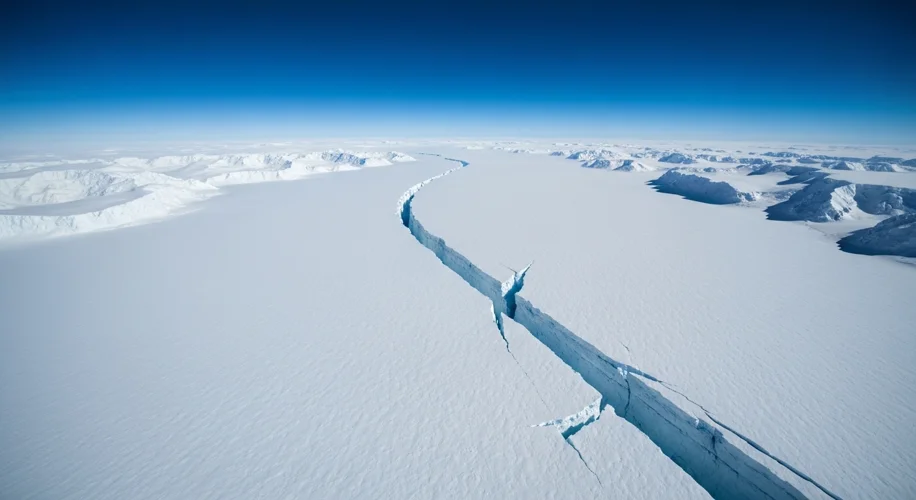Imagine a world hidden miles beneath the vast, frozen expanse of Greenland’s ice sheet. For scientists studying our planet, this is precisely the kind of mystery that keeps them going. Recently, a team of researchers witnessed something truly unexpected: a massive lake, buried deep under the ice, erupted.
This isn’t your typical volcanic eruption. Instead, it’s a phenomenon involving subglacial lakes – bodies of water that exist beneath glaciers and ice sheets. These lakes are fascinating in themselves, often sealed off from the atmosphere for thousands of years. But what happened in Greenland was different. Data showed that a large subglacial lake, estimated to be roughly 70 square kilometers, drained rapidly. This sudden emptying caused the ice above to crack and even lift upwards, creating a visible disruption on the surface.
Scientists are baffled because they haven’t observed anything quite like this before. The scale and speed of this event are what make it so remarkable. “We haven’t observed anything like this before,” one scientist involved in the research stated. This eruption has significant implications for how we understand the dynamics of ice sheets, especially in a warming world.
Subglacial lakes can influence the flow of ice. When a lake drains, it can lubricate the base of the ice sheet, potentially causing it to move faster towards the ocean. This process, known as subglacial meltwater drainage, is a key area of research in understanding sea-level rise. If these buried lakes can erupt and cause such dramatic surface changes, it suggests our models for glacial movement might need an update.
This event in Greenland highlights how much we still have to learn about our planet’s icy regions. They are not static, frozen landscapes, but complex systems with hidden processes that can dramatically affect their behavior. As climate change continues to warm the planet, understanding these dynamics is more crucial than ever. It’s a stark reminder that Earth still holds many secrets, and sometimes, those secrets reveal themselves in dramatic ways, pushing the boundaries of our scientific knowledge.

